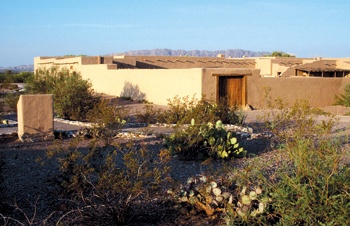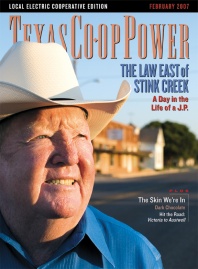In 1848, shortly after Mexico surrendered its claim to Texas, an American trader and freighter traveled the brutal road through the Chihuahuan Desert to the Presidio del Norte, the most remote outpost of the Mexican empire. He was Benjamin Leaton, and he found himself in a tiny, struggling frontier pueblo, “a miserable, Indian-blighted place.”
Leaton crossed the Rio Grande to the Texas bank of the river. His freighting experience told him that commerce would soon flow between San Antonio, Texas, and Chihuahua, Mexico, fording the river at Presidio del Norte, not farther upstream at El Paso. He meant to establish a trading post that would profit from the steady stream of teamsters, traders and travelers that he saw coming.
Leaton selected a stretch of land 3 miles downstream. There, the Mexican army had built a small, fortified outpost—a fortín—from which they protected a few campesino farmers. Now, the army was gone, but the farmers remained.
Land titles were uncertain in the aftermath of the Texas Revolution, and none of the campesinos had ever completed the formalities necessary to prove their ownership. Recognizing an opportunity, Leaton bribed Esmerijildo Baiza, the alcalde (mayor) of the village at Presidio del Norte, and a former alcalde, Cesario Herrera. Before long, Leaton possessed a fine set of forged Mexican deeds to a tract along the river, measuring 5 miles long and over a mile wide.
As for the campesinos, Leaton ran them off at the point of a gun, with the support of Baiza. The farmers protested to the governor of Chihuahua that Leaton and the alcalde had stolen their land. But Leaton’s lands were no longer in Chihuahua; they were in Texas, beyond the reach of Mexican law.
Leaton expanded the fortín, building an enclosed compound with stables, corrals, courtyards, work areas, living areas and a trading post. There were 40 rooms, enclosed by walls and parapets. Immense wooden doors swung wide to admit horses and wagons into the courtyard.
The bastion, soon dubbed “Fort Leaton,” was not for show. It was a necessity for survival in lands where Mescalero Apaches roamed and raided. Leaton meant to trade with the Mescaleros, a dangerous business. He knew that Mexican soldiers would not cross the border to protect him. The nearest Texas soldier, ranger or sheriff was hundreds of miles away. Leaton mounted a small cannon over the gate to his compound.
The first group of Texians pulled into Fort Leaton in October 1848, eight months after the border had been drawn. It was an expedition led by legendary Texas Ranger Jack Hays, accompanied by the equally legendary San Antonian Sam Maverick. The 70-man entourage was charged with opening a road from San Antonio to Chihuahua.
The explorers were lost and half-starved. They had resorted to eating mustang meat, panther, bear grass, prickly pear tunas, the occasional polecat and four of their pack mules. Water was so scarce that they had chewed strips of boot leather to keep their mouths moist.
Leaton afforded Hays’ expedition the finest hospitality available. Hays’ men rested and reprovisioned at Fort Leaton. After their grueling experience, they elected not to continue on to Chihuahua; instead, they turned back toward San Antonio, taking an easier route suggested by Leaton.
Despite the travails of Hays’ expedition, the road from San Antonio soon became a busy trading route known as the Chihuahua Trail. Fort Leaton became a landmark in the region, and Ben Leaton became a heralded host and scoundrel who used the strategic position of his trading post to skillfully exploit Mexicans, Mescaleros and travelers of every stripe.
Today the restored Fort Leaton State Historic Site is just south of Presidio. There are two historical markers at the fort. They tell differing versions of its establishment, but neither mentions that Ben Leaton’s tenure began with a bold and illegal land grab.
Jefferson Morgenthaler is the author of The River Has Never Divided Us from the University of Texas Press.


